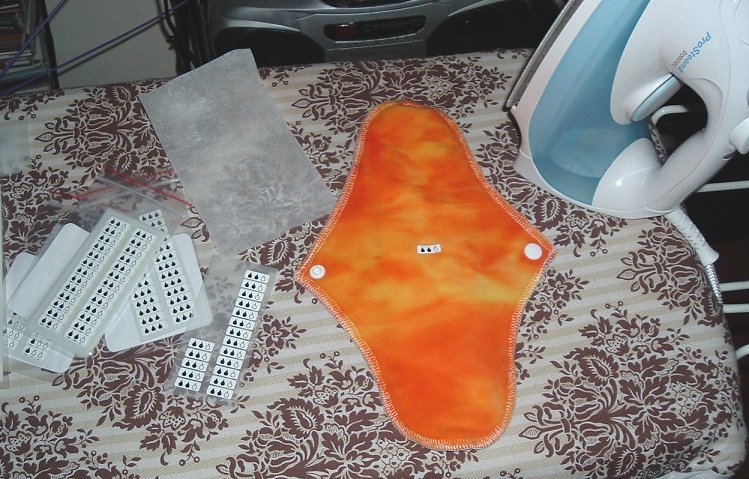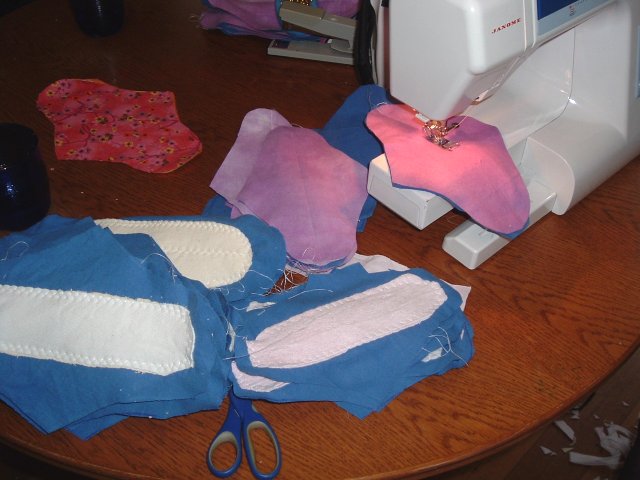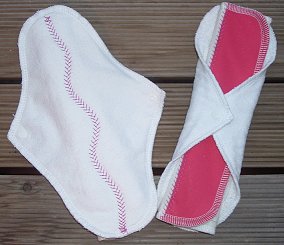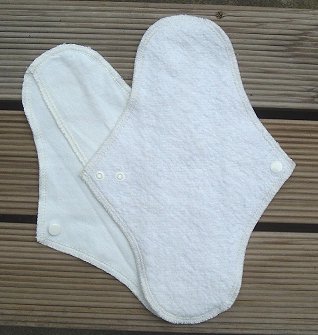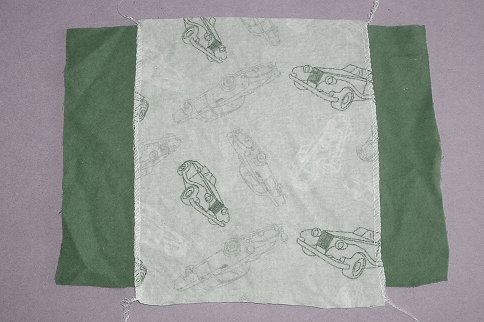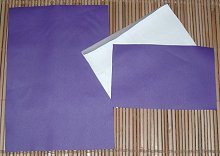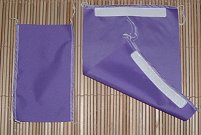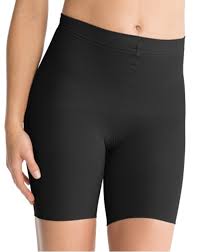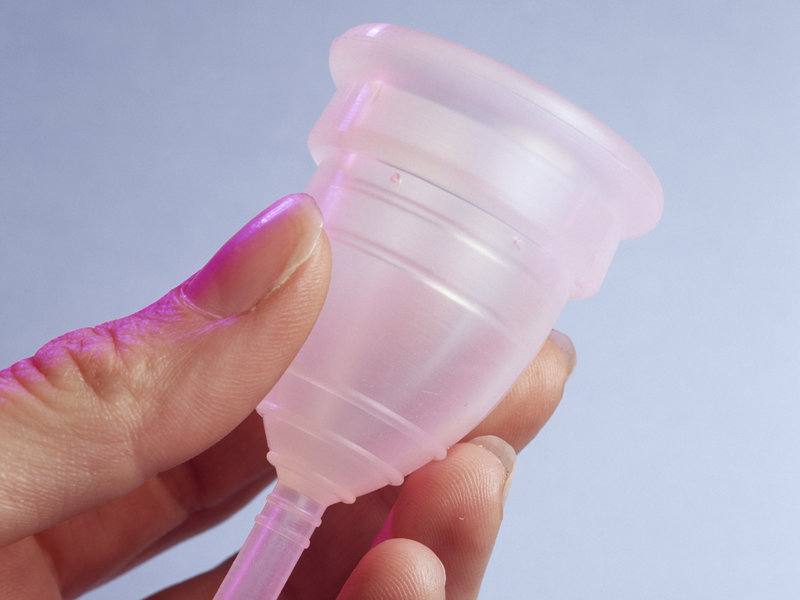Pad Making Instructions – Belted Pads – Not all women wear underpants! This is something we tend not to think about, but in many of the situations where women would need these cloth pads, they may not have underpants to be able to wear conventional pads with. So it is worthwhile either donating underpants too (hard to judge size however, and when these wear out the pads will become hard/impossible to use)… or created belted cloth pads. We have belted pad designs which is not difficult to make, and creates a belted pad that is fully adjustable to the wearer’s size.
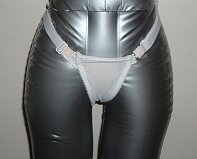
The belted pad can either be a replacement for underpants – where the woman uses that to attach the cloth pads to. Or it can itself be absorbent. It is a good idea to make the belt part detatch from the pad, so that the one belt can be used for several pads/holders, so only one belt would need to be provided. The belt part can be made from elastic with adjustable buckle things (like brastraps use), or tie up ones made from wide cotton twill tape (ribbon would be slippery and not suitable). idn play
Loop End Holder
This type of belted pad has a long strip of fabric with loops on the ends (either one loop in the centre, or a loop on each corner). These loops allow a cord to be threaded through to make a belt to hold the strip of fabric in place. When worn, this cord can be tied at the waist or hip, wherever is most comfortable for the wearer. taruhan bola
Casing End Holder
This type of belted pad has a long strip of fabric that is folded over at the ends to form a casing through wich the belt/cord is threaded. The end of the fabric is folded over and sewn down (shown in purple), forming a space where the waist cord can be threaded through. This space needs to be wide enough to easily allow this… and don’t forget that the wearer may not have access to safety pins or other methods to help them thread it though if they cannot easily do it by hand. americandreamdrivein.com
The belt would then thread through the front and back, making a similar effect to that shown on the right,
Re-purposed Bra
This type of belted pad is made from cutting up and sewing back together a bra – to make belted pad holder that has adjustable side elastics (by using the bra straps with their adjusters). So this style should be easy to use and ajust to fit not only different sized women, but also fit a woman as she grows

This is a more complicated belted pad to make, but once you’ve made one and understand how it works, you should be able to make more easily. Making a belted pad in a “Base+insert” style, means that you would make a belted base/holder that has straps or pocket ends, that hold absorbent inserts in place.
It could be made with loop or casing ends.
It would be recommended to make the base waterproofed (like the base + insert pads), so that 2-3 bases could be supplied with several inserts, which would provide a quick drying pad system, allowing the woman to leave the one base on during the day and change inserts as required.
“Pocket” or “All-in-One” pad
Making a pocket or AIO belted pad would mean you would make a very long, wingless pocket pad or AIO pad. As the pad would need to be changed regularly, the belt would need to be able to detatch from the absorbent pad, so that you would not need to provide several belts.
Things to think about
In the belted pads we have made, the sizes we have used are strips approx 40cm/16inches long, and about 7cm/2.5in wide. This length or longer (up to 50cm/20in) would be an appropriate length for belted pads.
To some this may seem very long, but the belted holder needs to be long enough to be able to reach the waist at both front and back (remebering that at the back it has to go over the fullness of the buttocks). You could make a flared back version which would be more comfortable and covering for the wearer.
The waist belt can be made from something such as wide twill tape, or even elastic. Wider would be more comfortable for the wearer. A tie up version is recommended over an elasticated waist because it can be adjusted to fit most women, unless the elastic has a way to adjust the length, as a too loose or too tight belt will be less useful.

